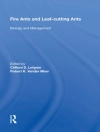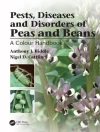Recent changes in the pattern of agricultural practices from use of hazardous pesticides to natural (organic) cultivation has brought into focus the use of agriculturally important microorganisms for carrying out analogous functions. The reputation of plant growth promoting rhizomicroorganisms (PGPRs) is due to their antagonistic mechanisms against most of the fungal and bacterial phytopathogens. The biocontrol potential of agriculturally important microorganisms is mostly attributed to their bioactive secondary metabolites. However, low shelf life of many potential agriculturally important microorganisms impairs their use in agriculture and adoption by farmers. The focal theme of this book is to highlight the potential of employing biosynthesized secondary metabolites (SMs) from agriculturally important microorganisms for management of notorious phytopathogens, as a substitute of the currently available whole organism formulations and also as alternatives to hazardous synthetic pesticides. Accordingly, we have incorporated a comprehensive rundown of sections which particularly examine the SMs synthesized, secreted and induced by various agriculturally important microorganisms and their applications in agriculture.
Section 1 includes discussion on biosynthesized antimicrobial secondary metabolites from fungal biocontrol agents. This section will cover the various issues such as development of formulation of secondary metabolites, genomic basis of metabolic diversity, metabolomic profiling of fungal biocontrol agents, novel classes of antimicrobial peptides. The section 1 will also cover the role of these secondary metabolites in antagonist-host interaction and application of biosynthesized antimicrobial secondary metabolites for management of plant diseases.
Section 2 will discuss the biosynthesized secondary metabolites from bacterial PGPRs, strain dependent effects on plant metabolome profile, bio-prospecting various isolates of bacterial PGPRs for potential secondary metabolites and non-target effects of PGPR on microbial community structure and functions.
Section 3 encompasses synthesis of antimicrobial secondary metabolites from beneficial endophytes, bio-prospecting medicinal and aromatic hosts and effect of endophytic SMs on plants under biotic and biotic stress conditions.
Tabella dei contenuti
Bioactive secondary metabolites of basidiomycetes and its potential for agricultural plant growth promotion.- Secondary metabolites of Metarhizium spp. and Verticillium spp. and their agricultural applications.- Secondary Metabolites of nonpathogenic Fusarium spp.: Scope in agriculture.- Non-mycorrhizal fungal spectum of root communities.- Bioactive Volatile Secondary Metabolites of Trichoderma spp.: Future Perspectives.- Phytopathogen biomass as inducer of antifungal compounds by Trichoderma asperellum under solid-state fermentation.- Bioactive Secondary metabolites of Trichoderma spp. for efficient management of phytopathogens.- Secondary metabolites of the plant growth promoting model rhizobacterium Bacillus velezensis FZB42 are involved in direct suppression of plant pathogens and in stimulation of plant induced systemic resistance.- Pyrroloquinoline quinone (PQQ): Role in bacteria-plant interactions.- Bacterial mechanisms promoting the tolerance against drought stress in plants.- Bacillus spp. as plant growth promoting rhizobacteria.- Secondary Metabolites from Cynobacteria: A potential source for plant growth promotion and disease management.- Biological control of nematodes by Plant Growth Promoting Rhizobacteria: secondary metabolites involved and potential applications.- A deeper insight into the symbiotic mechanism of Rhizobium spp. from the perspective of secondary metabolism.- Metabolites of Plant Growth Promoting Rhizobacteria for the Management of Soil Borne Pathogenic Fungi in Crops.- Exploiting of beneficial endophytic microorganisms in plant growth promotion and crop protection: Elucidation of some bioactive secondary metabolites involved in both effects.- Bioprocessing of endophytes for production of high value biochemical.- Synthesis and application of hydroxamic acid: A key secondary Metabolite of Piriformospora indica
Circa l’autore
Harikesh Bahadur Singh is a Professor in the Department of Mycology and Plant Pathology, Institute of Agricultural Sciences, Banaras Hindu University, Varanasi, India. Prof. Singh has been decorated with several national and international awards for his key role in popularizing organic farming and translating agriculturally important microorganisms from lab to land. To his credit he has 20 U.S. patents which have been successfully transferred for commercial production of biopesticides to several industrial houses in India.
Chetan Keswani is a Post-Doctoral Fellow in the Department of Biochemistry, Institute of Science, Banaras Hindu University, Varanasi, India. He has keen interest in regulatory and commercialization issues of agriculturally important microorganisms. He is an elected Fellow of the Linnaean Society of London, UK. He received Best Ph.D. Thesis Award from the Uttar Pradesh Academy of Agricultural Sciences, India in 2015. He is an editorial board member of several reputed agricultural microbiology journals.
Munagala S. Reddy is a Professor in the Department of Entomology & Plant Pathology at Auburn University, USA. He is the founder Chairman of the Asian PGPR Society for Sustainable Agriculture. He is a recipient of many prestigious awards from USA, Canada, Saudi Arabia, Indonesia, Philippines, China, India, etc. He has been successful in generating several millions of dollars funding from Federal, State, Private and International agencies for his research to commercialize biofertilizers and biofungicides. Currently, he is an entrepreneur and consultant for several national and international agencies. He has authored over 300 publications.
Estibaliz Sansinenea Royano joined the Chemistry faculty in the Benemérita Universidad Autónoma de Puebla, Facultad de Ciencias Químicas, Puebla, Pue. México in 2012. Her current research interest is ‘secondary metabolites from microorganisms’ with special emphasis on Bacillus spp. She has published 31 research articles, 4 book chapters and edited 1 book.
Carlos García-Estrada received his D. Phil from the University of León (Spain) in 2003 after completing his training at University of Mississippi, MS (USA). In 2004, he received the Extraordinary Award in a Doctorate and started his postdoctoral studies at Instituto de Biotecnología de León (INBIOTEC). Since 2011, he is the Head of the Biopharma and Biomedicine Area of INBIOTEC and Adjunct Professor at the University of León. He has published more than 50 scientific articles, 13 book chapters and has edited 2 books.












